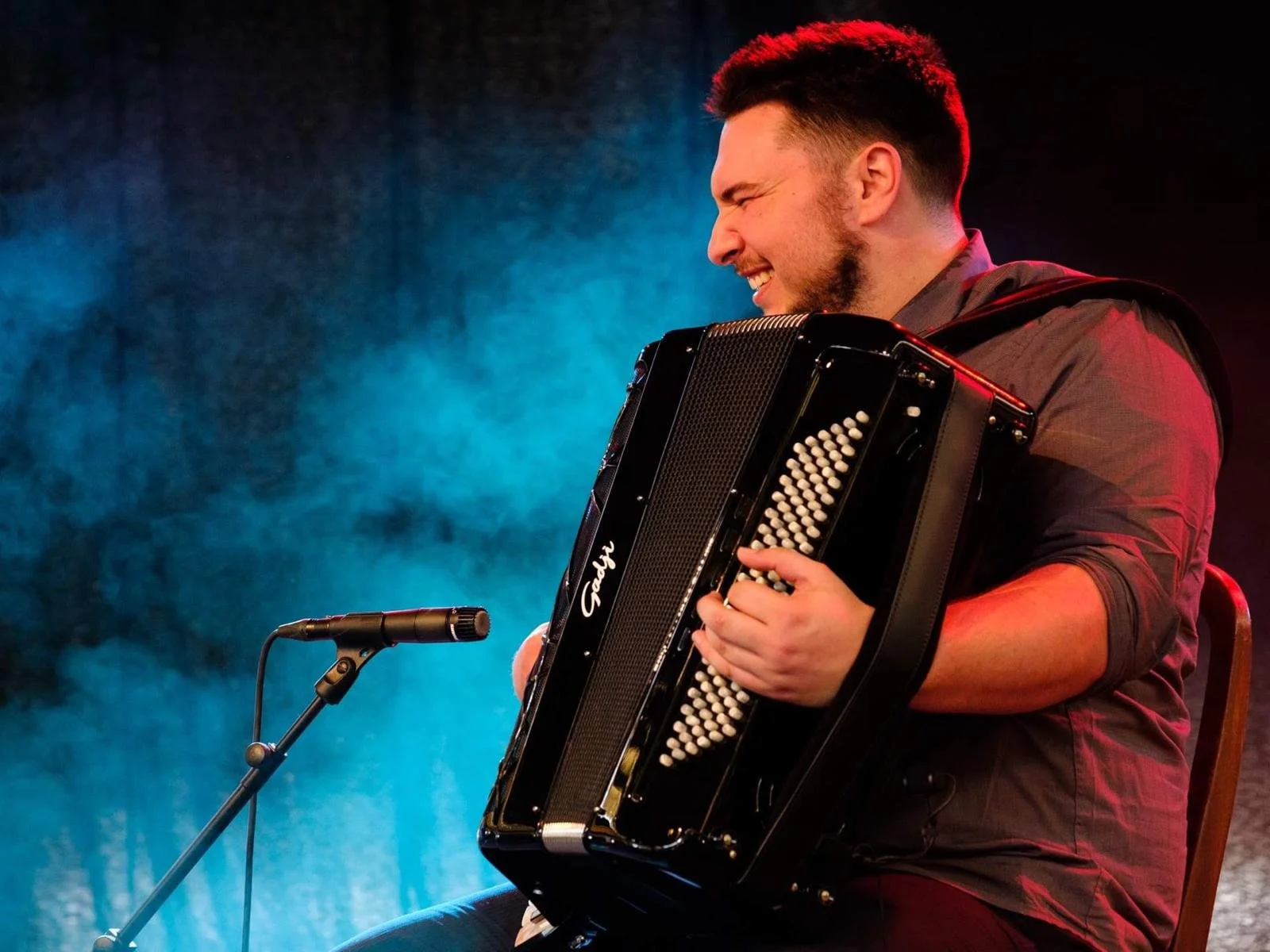Brazilian forró
Blumenau, Santa Catarina, Brazil, by way of New York
Though only in his twenties, accordionist Felipe Hostins has been thrilling audiences for over a decade. Hostins is a forrozeiro, or forró musician, from Blumenau, in the Brazilian state of Santa Catarina, known for his stellar musicianship and for playing like he has “an entire orchestra in his accordion.”
Forró is social dance music created at the turn of the 19th century from the melding of Portuguese button-accordion tunes and African rhythms. In the cowboy culture of the rocky, arid Brazilian sertão, the word “forró” became a catchall phrase for the music, the dance style that accompanies it, and the event where it is played. These can last all night long, with couples young and old dancing close, legs locked, rocking to the infectious rhythms of the sanfona (accordion), the zabumba (bass drum), the triangle, and the rabeca, a unique Brazilian fiddle.
Several theories exist on the origin of the term “forró.” One suggests it comes from “forrobodó,” meaning “great party” or “commotion.” Another that it derives from the English expression “for all”—English engineers on the Great Western Railroad would host balls, some only for railroad personnel and some for the general public (“for all”). Whatever its origin, forró became associated with a unique musical style that emerged in Northeast Brazil’s ranching culture. In the 1940s, accordionist and singer Luiz Gonzaga brought the music to Rio de Janeiro and became forró’s first big star.
Like many musicians from Santa Catarina, Felipe Hostins first learned rhythms typical in southern Brazil, like sertanejo de raiz, chamamé, and others from the gaucho tradition. He inherited his talent for the accordion from his grandfather, Valmor Hostins. “My grandpa decided that I was going to learn how to play in order to keep the music alive in our family parties,” he recalls. “Then, he got me a tiny accordion and sat me on a stool in front of him…. He strummed and said I had to replicate what he was doing. So I learned … by looking and playing by ear.” Together, grandfather and grandson shared their love for the accordion by listening to old records of local southern Brazilian music. The encounter with forró was nearly an accident. Among his grandfather’s records, Felipe found a recording of “Feira de Mangaio”—one of the most popular forró songs to the present day—which instantly became his favorite: “I didn’t even know what forró was, but I was possessed by that song and always listened to it. Then, little by little, I started discovering other forró records by Luiz Gonzaga and Nhozinho do Acordeon.”
In southern Brazil where sertanejo de raiz and sertanejo universitário are the favored genres, Hostins found few opportunities to play forró, but whenever he could, he would. After moving to the U.S. in 2015, Hostins joined a thriving forró scene in New York City. There he jumpstarted his international music career, playing with different groups and artists, and at venues all over the city, including the Lincoln Center. Comfortable in myriad musical styles, he says of forró: “Forró is the joy of my life. I think I feel the same energy of those dancing when I am playing.”
Felipe will be joined in Richmond by Gil Oliveira (zabumba), Davi Vieira [triangle, timbau (percussion), vocals], Humberto Silva de Castro (violin), and Jake Owen (bass).


